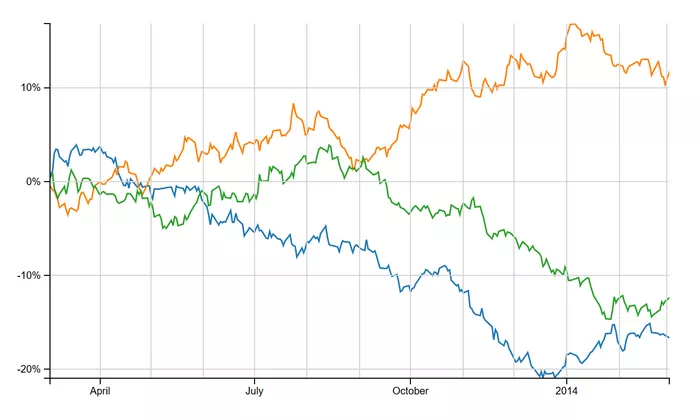Dental insurance is a financial product designed to help individuals and families manage the costs associated with dental care. With the rising expenses of dental treatments, having dental insurance can be a significant relief, covering a portion of the costs for various dental procedures. However, understanding what is covered by dental insurance and what is not can be confusing. This guide aims to provide a detailed overview of dental insurance coverage, its categories, limitations, and how to make the most of your dental insurance benefits.
What Is Dental Insurance?
Dental insurance is a type of health insurance that specifically covers the costs related to dental health and care. It is designed to help you pay for dental treatments, from routine check-ups and cleanings to more complex procedures like root canals and dentures. Dental health, also known as oral health, is crucial to your overall well-being, and dental insurance can help you maintain good oral health without breaking the bank.
You can purchase dental insurance as part of a comprehensive medical insurance plan or as a separate policy through a dental insurer, the Health Insurance Marketplace, or a private insurance broker. Understanding the specifics of your dental insurance plan is crucial to making informed decisions about your dental care.
Dental Insurance vs. Dental Benefits
When shopping for dental insurance, you may encounter the term “dental benefits,” which is slightly different from dental insurance. Dental insurance plans are designed to absorb financial risks associated with dental treatments. For example, if you need to have a tooth pulled or get a root canal, the insurance plan will cover the costs accordingly.
On the other hand, dental benefits plans cover some dental treatments in full, others partially, and some not at all. While dental benefits can be helpful, they are not a catch-all solution. Many Americans (79%) have dental benefits, often provided by employers or group programs, according to the National Association of Dental Plans (NADP). Large employers are more likely to offer dental benefits than small employers, and high-wage workers are more likely to receive them than low-wage workers.
Medicare does not cover dental care, and most state Medicaid programs only cover dental care for children. Therefore, understanding the specifics of your dental insurance or benefits plan is essential to making the most of your coverage.
Dental Insurance Categories
Although dental insurance plans may vary in features, the most common offerings can be grouped into the following categories:
1. Direct Reimbursement Programs
Direct reimbursement programs pay you a predetermined percentage of the total amount you spend on dental care, regardless of the treatment category. This method typically does not exclude coverage based on the type of treatment needed and allows you to visit the dentist of your choice. It encourages you to work with your dentist toward healthy and economically sound solutions.
2. “Usual, Customary, and Reasonable” (UCR) Programs
UCR programs also allow you to visit the dentist of your choice. These plans pay a set percentage of the dentist’s fee or the plan administrator’s “reasonable” or “customary” fee limit, whichever is less. These limits are the result of a contract between the plan purchaser and the third-party payer. However, these “customary” fees may or may not accurately reflect the fees that local dentists charge, leading to fluctuations and a lack of government regulation on how a plan determines its fee level.
What Does Dental Insurance Typically Cover?
Dental insurance plans typically cover three tiers of dental care: preventive care, basic care, and major procedures. Each tier receives a different level of coverage from the insurance company. Here’s a breakdown of what each tier includes and the typical percentage of coverage:
1. Preventive Care
Preventive care includes services like annual cleanings, X-rays, and sealants. This type of care is intended to prevent further dental problems. Most dental insurance plans cover 100% of preventive care costs, as long as you use an in-network provider. Preventive care is crucial for maintaining good oral health and can help avoid more expensive treatments in the future.
2. Basic Care
Basic care procedures are intended to address minor dental problems before they become more significant. This can include common treatments such as fillings, extractions, and periodontal treatment for gum disease. Dental insurance plans typically cover 80% of the costs for basic care procedures. Depending on your plan, you may have to meet your deductible before coverage begins at this level.
3. Major Procedures
Major procedures involve substantial dental work intended to fix significant problems. This includes crowns, bridges, inlays, and dentures. Dental insurance plans typically cover 50% of the costs for major procedures. Depending on your plan, root canals can fall into either the basic or major category. Whether or not your plan covers major procedures may also depend on whether you have reached your maximum coverage for the year.
Key Procedures Covered by Dental Insurance
While dental insurance plans vary, here are some key procedures that are typically covered:
1. Dentures
Most full dental insurance policies include some restorative coverage, meaning that up to 50% of the cost of dentures is covered. Regular deductibles and co-pays still apply, so the actual cost to the patient is always substantial. Due to the annual maximum coverage limit, timing is crucial; if you get dentures in a year when you have already had other procedures, your coverage may end up being considerably less than 50%.
2. Crowns and Bridges
Crowns and bridges are also considered major procedures and are typically covered at 50% by dental insurance plans. These treatments are used to restore damaged teeth or replace missing teeth, improving the function and appearance of your smile.
3. Root Canals
Root canal treatments are designed to save a tooth that is severely infected or decayed. Depending on your plan, root canals can fall into either the basic or major procedure category. Coverage may vary, but many dental insurance plans will cover a portion of the cost.
4. Fillings and Extractions
Fillings and extractions are common basic care procedures that are typically covered at 80% by dental insurance plans. Fillings are used to repair cavities, while extractions involve removing a tooth that is damaged or decayed beyond repair.
Limitations of Dental Insurance
While dental insurance can be a valuable financial tool, it does have limitations. Here are some important considerations:
1. Annual Coverage Limits
Dental insurance plans typically have an annual maximum coverage cap, which can range from 1,000to1,500 or higher. If you have already had significant dental work done earlier in the year, your coverage for later procedures may be limited. This is especially important to consider when planning for major procedures like dentures.
2. Waiting Periods
Most insurance companies have a waiting period for new patients, although some do not. This waiting period usually applies to non-emergency procedures, such as dentures, and can range from a few months to a year. During this time, you may not be covered for certain treatments.
3. Cosmetic Procedures
Most dental insurance policies do not cover any costs for cosmetic procedures, such as teeth whitening, tooth shaping, veneers, and gum contouring. Because these procedures are intended to improve the appearance of your teeth rather than address medical necessity, they are not typically covered by dental insurance.
4. Network Restrictions
Some dental insurance plans require you to visit a dentist within their network to receive full coverage. If you visit an out-of-network dentist, your coverage may be limited or you may have to pay higher out-of-pocket costs.
How to Make the Most of Your Dental Insurance
To make the most of your dental insurance benefits, consider the following tips:
1. Understand Your Plan
Take the time to read and understand your dental insurance plan. Know what procedures are covered, what percentage of the costs will be paid by the insurance company, and any deductibles or co-pays that apply. This will help you make informed decisions about your dental care.
2. Stay Up-to-Date on Preventive Care
Preventive care is crucial for maintaining good oral health and can help avoid more expensive treatments in the future. Make sure to schedule regular check-ups and cleanings, and take advantage of any preventive care benefits offered by your plan.
3. Plan Ahead for Major Procedures
If you know you will need a major procedure like dentures in the future, plan ahead to maximize your coverage. Consider the timing of your procedure relative to your annual coverage limit and any waiting periods that may apply.
4. Shop Around for Dental Insurance
Not all dental insurance plans are created equal. Compare different plans to find one that best meets your needs and budget. Look for plans with high coverage levels for the procedures you are most likely to need.
5. Consider Supplemental Insurance
If your dental insurance plan has limited coverage for certain procedures, consider purchasing supplemental insurance to cover the gap. This can provide additional financial protection and peace of mind.
Conclusion
Dental insurance can be a valuable financial tool for managing the costs of dental care. By understanding what is covered by your plan and making informed decisions about your dental care, you can maximize your benefits and maintain good oral health. Remember to stay up-to-date on preventive care, plan ahead for major procedures, and shop around for the best dental.
Related topics:






























